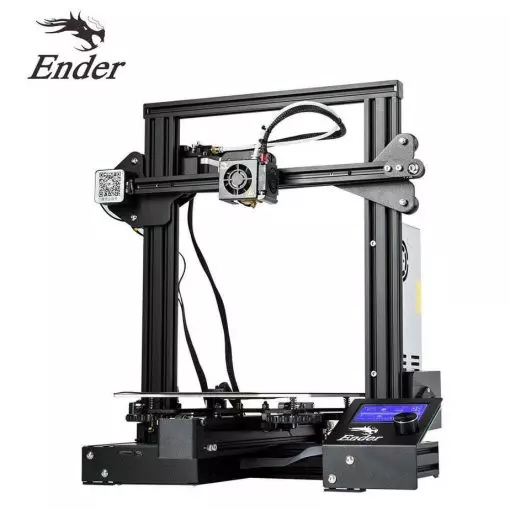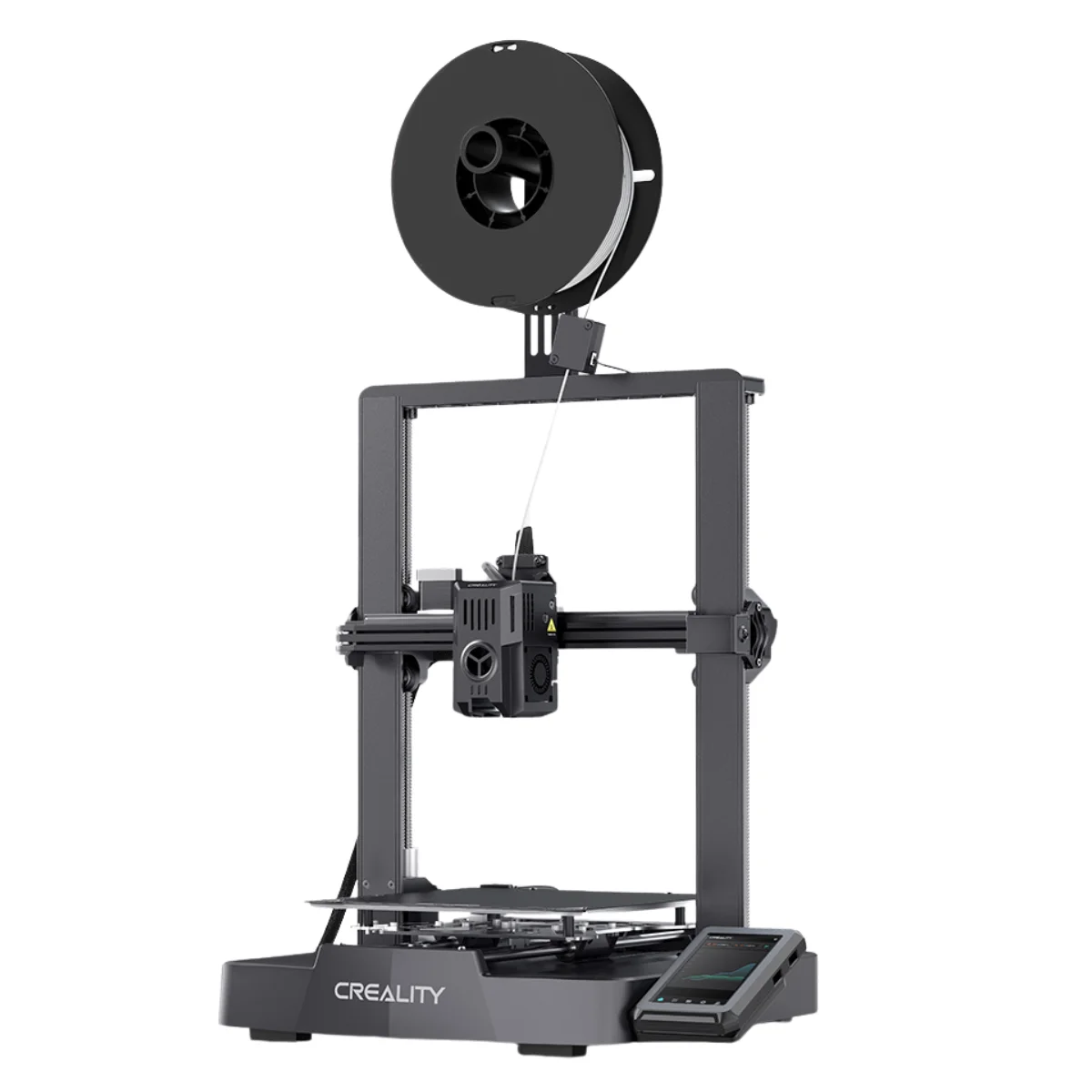Compare Ender 3 vs Ender 3 V3 KE
Comparison between the best 3D printers
Choose the best 3D printer at the best price. The cheapest 3D printers are here.
Buy a 3D printer here with 3D Fila.
 |
 |
|
| Model | Ender 3[BUY Ender 3] |
Ender 3 V3 KE[BUY Ender 3 V3 KE] |
| Printing Material | Filament | Filament |
| Buy Filament for Creality 3D Ender 3 | Buy Filament forCreality Ender 3 V3 KE | |
| Estimated price | $210,00 | $279,00 |
| Manufacturer | Creality 3D | Creality |
| Release Year | 2018 | 2023 |
| Print Volume [mm] | 220x220x250 | 220x220x240 |
| Printer Size [mm] | 440x440x465 | 433x366x490 |
| Weight [kg] | 6,62 | 7,8 |
| Power Loss Recovery | NO | YES |
| Enclosed printer | NO | NO |
| Bed Leveling | Manual | Automatic |
| Filament End Sensor | NO | YES |
| Bed type | Heated | Heated |
| Power supply system | Bowden | Direct Drive |
| Standard nozzle | 0,4 | 0,4 |
| Maximum Nozzle Temperature [°C] | 255 | 300 |
| Maximum Bed Temperature [°C] | 110 | 100 |
| Maximum printing speed [mm/s] | 180 | 500 |
| Filament holder | YES | YES |
| Camera for supervision | NO | NO |
| Recommended filaments | PLA, TPU, ABS, PETG | PLA, PETG e TPU (95A+), ASA |
| Recommended slicers | Cura, Simplify, Slic3r | Creality Print, Cura 5.0 ou superior, Prusa Slicer, Orca |
| Maximum Resolution [mm] | 0,1 | 0,1 |
| Processor | 8 bits | 32-bit Silenciosa |
| Display | Mono | Touchscreen 4,3'' |
| Power Supply | 24V / 270W | 350 W |
| Connectivity | SD / USB | USB drive, LAN, Creality Cloud APP |
| Operating systems | Windows, Mac, Linux | Windows, Linux, Macbook |
| Date of registration in the system | 2021-04-13 | 2024-03-06 |
| Release date | 2018 | 2023 |
| Extra features | The Ender 3 V1 is a DIY assembly 3D printer, a sales leader since 2017, standing out for its cost-benefit. With a wide printing capacity, it has a CNC machined structure for precision and stability. It offers high-precision prints with low noise, thanks to its innovative V-profile and pulleys. It has a self-adhesive magnetic platform for easy removal of models and excellent adhesion. The Ender 3 heats up quickly, reaching 100°C in 5 minutes, ideal for agile prints. It includes protection against power failures, allowing you to resume printing after interruptions, saving time and material. | The Ender 3 V3 KE, an advancement in the Ender line, achieves print speeds of up to 500mm/s with its touchscreen and WiFi connectivity. Although it has a slightly smaller print area than the SE model, it makes up for it with superior print quality. Its robust design, high-quality components, and intuitive wireless control are appreciated, although Creality's mobile app lacks practicality and does not have a closed system. It stands out for its linear track on the X-axis for stability at high speeds and the hotend that supports up to 300°C, ideal for high-temperature filaments. |
| Support for multiple colors and materials (AMS and CFS) | NO | NO |
Notes * |
||
| Cost-benefit | 6 / 10 | 7 / 10 |
| Hardware | 0.5 / 10 | 3.2 / 10 |
| Tela | . | . |
| Print volume | 3 / 10 | 3 / 10 |
| Performance | 1 / 10 | 4 / 10 |
| [BUY Ender 3] | [BUY Ender 3 V3 KE] |
Conclusion |
| In comparing the Ender 3 and the Ender 3 V3 KE, both from Creality and serving different user needs, several key factors emerge. The Ender 3, being an older model, offers an attractive price point while delivering solid performance for hobbyists and those entering the world of 3D printing. It features manual bed leveling and does not support power loss recovery, which may require more hands-on management during printing processes. On the other hand, the Ender 3 V3 KE, while higher in price, brings several enhancements that justify the investment for more serious users. With automatic bed leveling, a robust design, a higher maximum nozzle temperature suitable for various filament types, and advanced connectivity options, it significantly improves user experience. Its ability to achieve higher print speeds and enhanced precision makes it ideal for those looking to maximize productivity and print quality. While the Ender 3 provides great value for beginners and casual users, the Ender 3 V3 KE is better suited for advanced users who require more features and faster printing capabilities. Ultimately, the choice between the two should consider the user's level of expertise, specific printing needs, and budget. |

